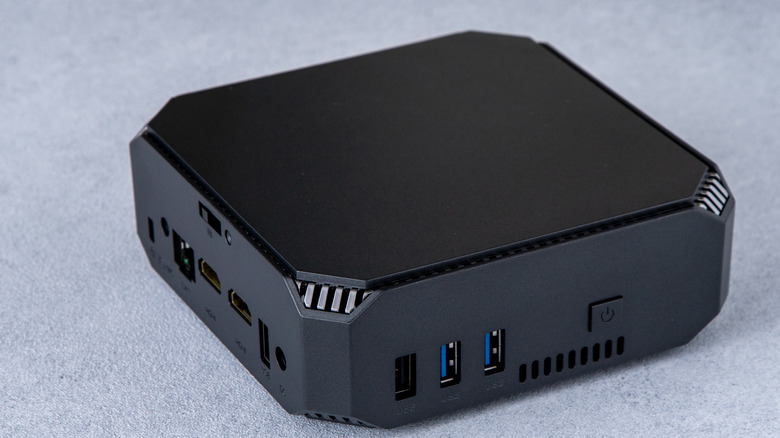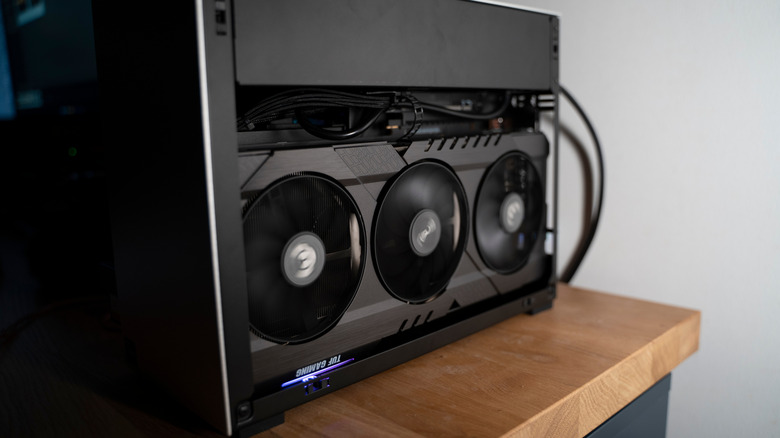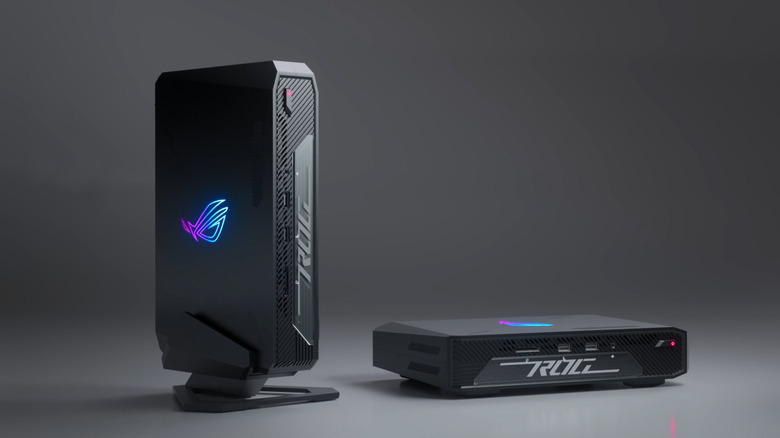Building A Small Form Factor PC? Don't Forget To Consider These 10 Things First
There are many reasons you might want to build yourself a small form factor (SFF) PC. I built one because I wanted a home entertainment center of sorts — those PCs are often referred to as HTPC, for home theater. Such a PC doesn't need to be too powerful, which is why they're often really small. But, there are varying degrees of SFF PCs, and it's entirely possible to build one for gaming or other high-performance tasks. Even with such a wide range of PCs, there are some universal things to consider when building an SFF computer.
SFF PCs are no different from regular computers in the sense that you can tailor them to your needs. I've seen such PCs decked out with the latest components, including GPUs like Nvidia's RTX 5090, RTX 5080, and RTX 5070, but also some that don't have a dedicated GPU and are therefore forced to run on integrated graphics (or an AMD APU, which combines a GPU and a CPU into one chip). Building a cheap SFF PC is decidedly easier, as component size and thermals are less of an issue if the computer in question isn't too powerful. The better the PC, the harder it gets to build one — but it's also a lot of fun to do, too.
The first thing to consider is why you want an SFF PC instead of a regular-sized desktop. Portability? Aesthetics? Saving space? Knowing this will help you decide the final size of the case and will therefore lock you into a certain performance bracket. Once you've decided that, there are a few things to remember when building an SFF PC.
Things to consider when picking your components
Building a typical PC starts with choosing the big-ticket components, such as the most powerful graphics card or a good processor. In SSF building, it's better to start the other way around: with the case. Depending on how small you want to go, you might need to give up on certain GPUs or CPUs. Some GPUs won't physically fit inside every case. CPUs will fit in any motherboard, but high-end processors need exceptional cooling, and you won't have the space for a robust AIO cooling solution in a tiny chassis. However, if you're fine with a PC that's on the bigger side of small, you can pick out your other components first.
The case is an important choice regardless, due to cooling and airflow. A cramped chassis means you can't install as many fans and there's next to no room for air to move within the case, making a high-end PC difficult to build. A mesh side panel won't be enough to protect your components — you still need cooling from other sources. Some cases allow for 240 mm or 280 mm liquid coolers while others barely fit a CPU fan. An SFF PC also means using a special motherboard: Mini-ITX and micro-ATX are the two most common choices.
Consider using low-profile RAM to save space, and check CPU cooler height. Remember that you might also need a special SFX power supply. For GPUs, you'll need a thin card that will handle heat well (and some generate a lot). Nvidia has a list of GPUs that will fit an SFF PC, but remember to leave room for the connector, too. Measure everything three times over when shopping.
Things to keep in mind when building your PC
Building a mini PC from scratch is less of an art and more of an exact science. You'll be fighting for every inch within the small chassis, so a lot of things that you can get away with in a normal build might make or break your SFF build. Cooling, or rather airflow, is crucial. Plan out the path that air is going to take within the case, and weigh in the number of intake and exhaust fans. Heat rises, so top fans are often chosen as exhaust and the side or front can be used for intake. More importantly, make sure that air will travel through the case with a path that allows it to escape, keeping your components (reasonably) cool.
Another thing is cable management. I've seen many PC builds (and have built many such PCs) where the remaining cables just get stuffed behind the motherboard. Sure, the end result looks neat enough and no one else knows they're there, but an SFF build doesn't give you the freedom to be lazy — cable management becomes crucial. Pick a modular PSU to avoid having useless cables. Use zip ties on excess cables and combine them in a way that makes sense without interfering with airflow.
Lastly, test boot your build outside of the case because taking the components out for troubleshooting becomes a hassle. If everything runs well, put it all together inside the chassis. Remember to clean your SFF PC frequently as heat can quickly become an issue.


